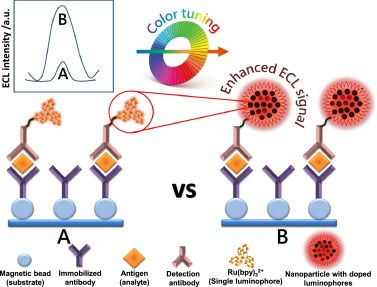What is clinical biochemistry?
- Zeki Kurtulus Bardakci
- Oct 16
- 3 min read

Clinical biochemistry (clinical chemistry) measures chemicals in blood and other fluids—things like glucose, urea, liver enzymes, lipids and electrolytes—to help doctors understand a patient’s health.
Spectrophotometry in simple words
Most chemistry tests are spectrophotometric. The idea is straightforward:
Reagent + Sample → Color/Light change.When the patient sample reacts with a reagent, the mixture changes how it absorbs light at a specific wavelength.
Shine light → Measure how much is absorbed.The analyzer sends light through the cuvette. The detector measures absorbance. More analyte usually means more absorbance (darker).
Beer–Lambert law (no math needed).Absorbance is proportional to concentration—so the instrument can convert absorbance into a result using a calibration curve.
End-point vs. kinetic.
End-point: read once after the reaction finishes (e.g., cholesterol).
Kinetic (rate): read multiple times to see reaction speed (e.g., ALT/AST). The rate is proportional to enzyme activity.
Blank & wavelength selection.The analyzer first reads a blank (no analyte) to zero the optics. It uses a specific wavelength where the reaction product absorbs best (e.g., 340 nm for NADH methods).
Key parts inside the analyzer: lamp (light source), monochromator/filter (selects wavelength), cuvette, photodiode detector, temperature control (usually 37 °C), pipetting system, mixer, and software.
What affects a spectrophotometric result?

Sample quality:Hemolysis, icterus, lipemia (HIL) can absorb/scatter light and bias results.
Volume & pipetting: wrong volumes, bubbles, or clots change absorbance.
Wavelength & path length: wrong filter or a dirty/damaged cuvette skews readings.
Temperature: enzymes are temperature-sensitive—unstable bath/heater shifts results.
Timing: for kinetic assays, incorrect timing = incorrect activity.
Reagent status: expired, contaminated, or poorly mixed reagents change reaction rates.
Stray light/optics: aging lamps, dirty mirrors/lenses cause drift and noise.
Calibration vs. Quality Control (QC)—they are NOT the same
Calibration sets the scale. The analyzer reads known standards and builds a calibration curve so that future absorbance values convert to correct concentrations.
Do it when you install a new lot of reagent, after major maintenance, or when the analyzer requests it.
Quality Control (QC) checks today’s performance. You run control sera (usually two levels—normal and high) and verify the results are within the lab’s target ranges.
QC confirms that calibration still holds and the system is stable right now.
If QC is out of range, patient results should not be released until the issue is found (reagent lot change, lamp drift, pipettor issue, temperature error, etc.).
Reference intervals vs. decision limits
A reference interval is the range seen in a healthy population (often varies by age, sex, method, and lab).
A decision limit is a medical cut-off (e.g., a value above which action is recommended).
Because intervals are method- and instrument-dependent, switching reagents or analyzers may require verification—otherwise a “normal” result on one system could be “abnormal” on another.
A quick, safe workflow for reliable results
Verify reagent lot, calibration status, temperature, and water quality.
Run two-level QC at the start of the shift and after major changes.
Check HIL flags; dilute/clear or recollect if needed.
For kinetic tests, confirm timing and linear range.
Review the Levey–Jennings chart or simple trend to spot drift.
If QC fails: stop, investigate (reagent, optics, pipettor, lamp), recalibrate if necessary, then rerun QC before releasing patient results.
When to call for service (what we fix)

Unstable absorbance baseline, noisy signals, or frequent lamp/optics errors
Temperature control faults (reaction bath not holding 37 °C)
Pipettor/aspiration problems, clots clogging lines, or volume inaccuracies
Cuvette carousel jams or dirty cuvettes affecting path length
Recurrent calibration/QC drift that returns after short periods
PCB Tech USA provides board-level repair and guided troubleshooting for clinical chemistry analyzers and photometers. Ship-in service is available across Florida.Include the instrument model, error codes, a brief description of symptoms, and (if possible) photos of error screens—so we can respond fast.


Comments